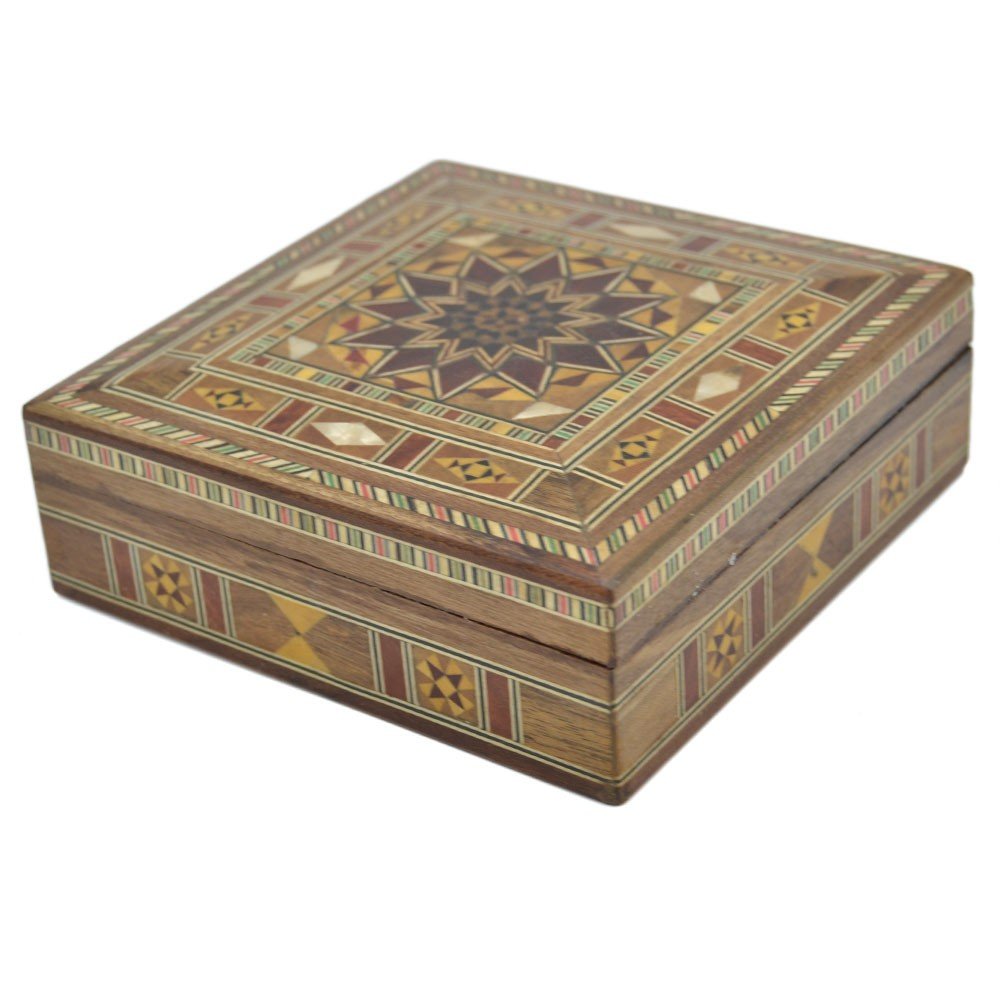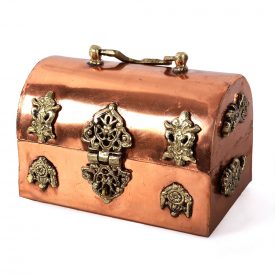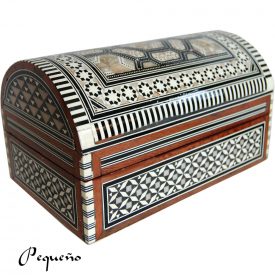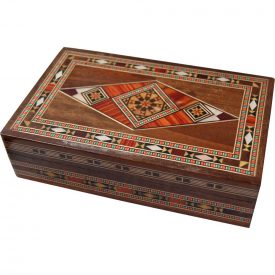In Jaima Alkauzar you can Buy Online Inlaid box squarefrom Syria decorated with laser-cut lattice, the best price.
This product has been made taking care of even the smallest detail by means of the artisanal inlay technique in Syria, one of the few places where this technique still exists.
More models availableHERE
External measures:
13cm x 13cm x 4.5cm
Inside:
10cm x 10cm x 3.5cm
The inlay technique refers to the veneer or inlay of fine sheets of precious wood, ivory or bone, mother-of-pearl or shells covering a wooden body.
It appears very early in history, in Mesopotamia, around 2600 BC, as numerous objects found in the excavations of Ur attest).
The Odyssey of Homer and Pliny the Elder name objects made according to this technique. It was also known in Pharaonic Egypt, and it was perpetuated in Coptic and later Islamic times. . In particular, one set of boards date from the beginning of the Islamic period. . They have a geometric decoration: a game of checkers and rhombuses associated with motifs of arcades and stylized columns. This precious-looking decoration still bears the mark of late antiquity. In the Fatimid period (10th-12th centuries), the motifs and style evothey shine.
It was in the 12th century, under the Seljuk Atabegs and the Ayubids that inlaid woodwork developed considerably, mainly for the furnishings of religious buildings. Marquetry work, which uses ivory and mother-of-pearl, associated with the Finely sculpted wood enhances the strictly geometric decoration of the complex motifs centered around eight- or ten-pointed stars.
This association of complex geometric networks, built around star-shaped polygons and rich inlay work, will find its fullness in the Mamluk period, in the decoration of great pious foundations. During the fourteenth century, an important use of large inlays with ivory elements sometimes stands out.
In a more miniaturist style, furniture elements are made, such as the kursi and the Koran box in inlaid wood with ivory, bone, and precious woods.
At the same time, the Christians of Egypt also used this technique to decorate their churches.
The Ottoman Turks probably borrowed the art of marquetry from the Mamluks, since then reserved for furniture items./ p>
The wooden marquetry was transmitted from the East to Italy, where it will receive the name of intarsia. The first mentions appear in documents found in Siena in the thirteenth century, where the use of ivory is privileged to obtain a strong contrast bichrome with dark wood. From Italy, the marquetry will then spread throughout Europe.






